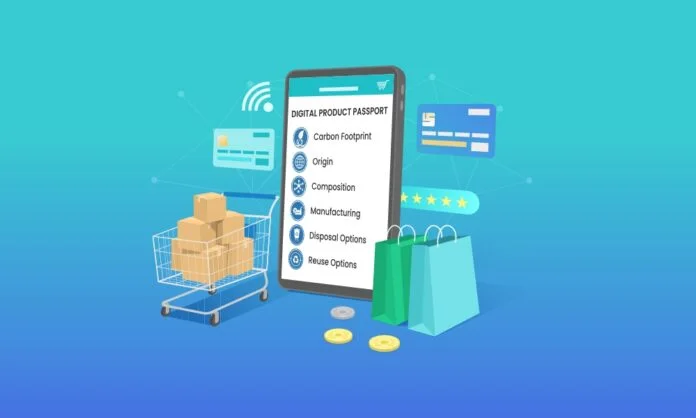A circular economy is not a need today; it is a must-have. Now the major force driving this economy is digital product passports. It’s indeed a game-changer, offering all the data on the product’s manufacturing, environmental impact, materials used, end-of-life, and so on.
Well, it’s the most critical aspect in maintaining transparency and sustainability in the product lifecycle. DPPs have been put forth by government authorities such as the European Union’s (EU) Ecodesign for Sustainable Products Regulation (ESPR).
It came into effect on 18th July 2024 and is an approach towards environmentally sustainable and circular products. Run down through the blog and clear the context of Digital Product Passport (DPP), including its benefits, industry use cases, and a lot more.
Let’s get started!
What are Digital Product Passports?
Digital Product Passports (DPPs) are mainly digital records that aim to collect, summarize, and share data about the product through the complete lifecycle. Right from information on raw materials, manufacturing processes, and end-of-life management, DPPs provide the required information on crucial aspects of the product, including sustainability, authenticity, and more.
The sole aim of these systems is to enable stakeholders and consumers to have complete information about the materials used in the product and its environmental impact.
The Significant Benefits of Digital Product Passports
Digital Product Passports offer a range of benefits for consumers, retailers, and businesses alike. The following are:
Transparency
The most important benefit is transparency, as DPP offers complete information about the product. This includes the material used, manufacturing process, and capacity so that users can make decisions easily.
This information also builds trust between consumers and manufacturers, thus improving transparency in business. Let’s take an example of a sofa set, wherein you get all the details about where it is manufactured, the process, the material used, and more.
Sustainability
Another goal of DPP is sustainability. They also take care of the products’ impact on the environment, providing details about energy consumption, carbon footprint, and more. With this information, businesses can make improvements in their environmental practices and work towards an eco-friendly future.
Circular Economy
Digital Product Passports help to reuse or recycle the product, thus promoting a circular economy. The recycling process helps to save resources while reducing waste materials. It’s a win!
Which Industries Should Implement DPP?
The implementation of DPP is applied to a wide range of industries producing goods for the European Market also, where environmental impact is on a scale.
Electronics: All electronic devices, including TVs, mobile phones, laptops, and machines, where energy efficiency and recyclability are important.
Furniture: This involves focusing on resources.
Textiles: This includes footwear and dresses, where there is a need for sustainable process, waste reduction, and more.
Batteries (under the Battery Regulation): This applies mainly to industrial and EV batteries, with requirements around responsible raw material sourcing, long-lasting performance, and proper end-of-life recycling.
DPP is expected to extend to other sectors in the future under the EU Digital Product Passport plan.
Information Included in the DPPs
The following information is included in the DPP. These include:
- Material structure, with or without recycled material
- Environmental footprint (e.g., carbon emissions)
- Visibility of the supply chain (naming the major suppliers, sourcing place)
- Repair and maintenance of information
- Sturdiness and projected durability
- End-of-life requirements (recycling, disposal, take-back options)
Challenges in Implementing Digital Product Passport (DPPs)
Technology Ready: Many small sized companies do not have ample resources, capabilities, and finances to implement IoT, blockchain, and other necessary technologies.
Absence of Standards: As standards are not present in any form yet, there are compatibility issues across industries and regions.
Privacy/Security: DPPs contain highly sensitive data that must be protected and comply with GDPR.
Striking a balance between Transparency and Confidentiality: Making sure that the information about the product is useful without revealing proprietary or personal information is one of the major concerns.
In a Nutshell
By understanding the complete product lifecycle, right from its manufacturing to the end process, digital product passports offer complete insights. This way, you can gauge the environmental impact and foster sustainability accordingly. The implementation of DPP initially started with the batteries but is expected to go on to several other products.
As mentioned above, Digital Product Passports focuses on a circular economy and has a long way to go in transforming global supply chains and maintaining transparency and sustainability in business.
We drop all the top blogs on our website. Stay tuned with us to catch the next big thing in tech.
FAQs
1] Is the Digital Product Passport compulsory?
Ans: Yes! Starting in 2027, the EU requirement will become mandatory for priority product groups.
2] Which sectors will be first affected by the DPP?
Ans: The following sectors are expected to be hit by the DPP:
- Construction
- Textiles and footwear
- Batteries (portable and industrial)
- Consumer electronics
Read More: Best Ways to Use Machine Learning for Digital Marketing


